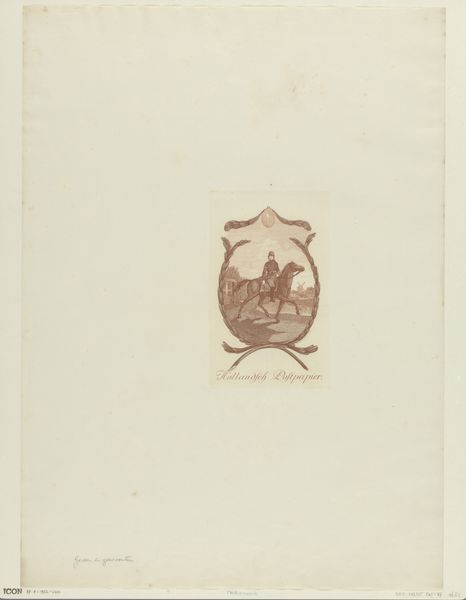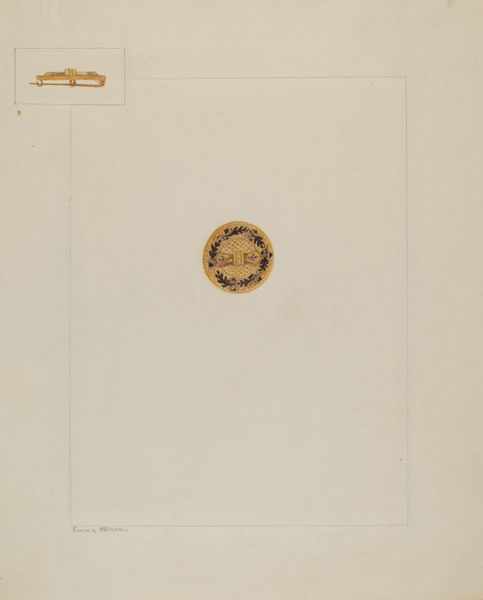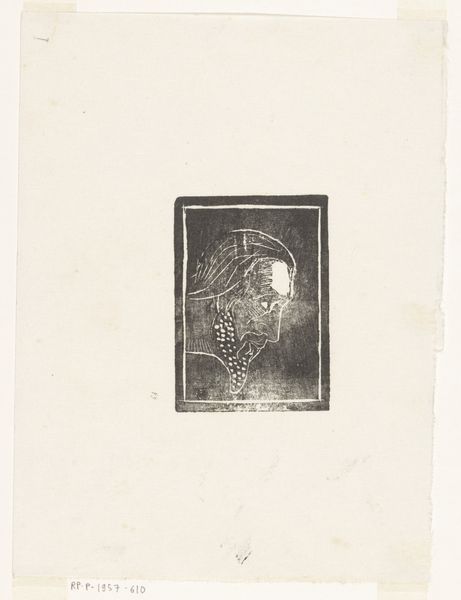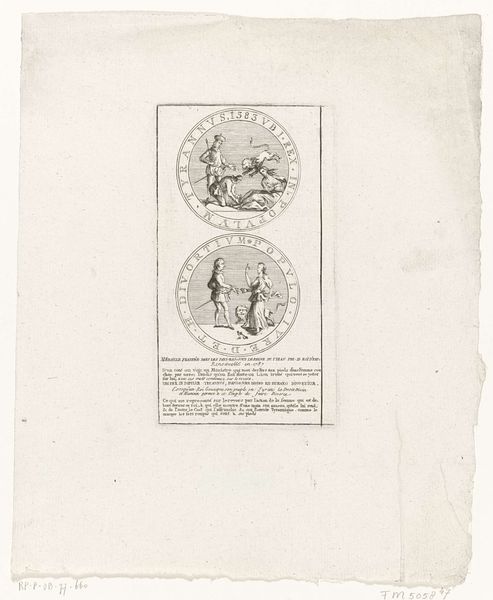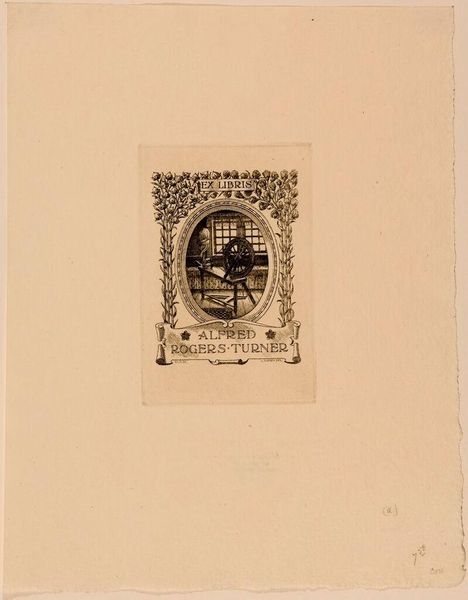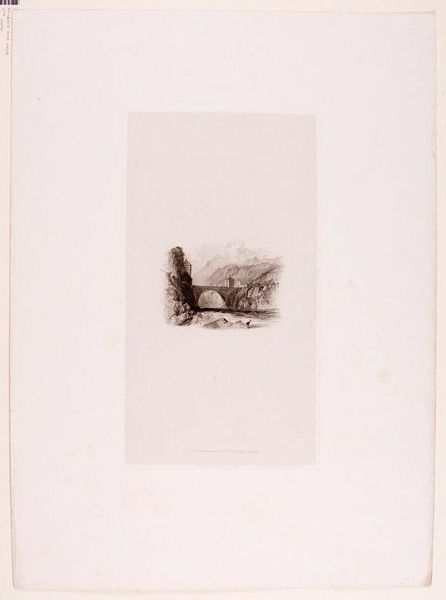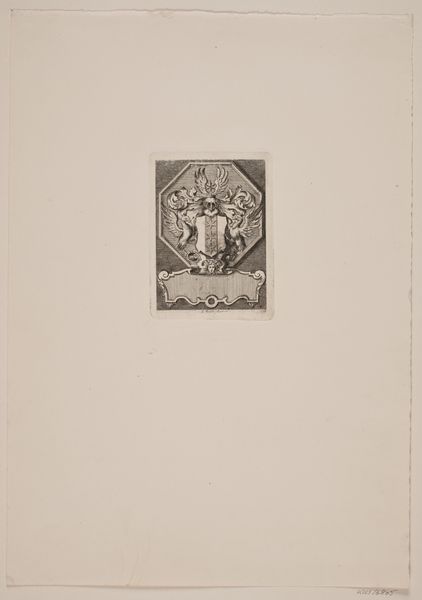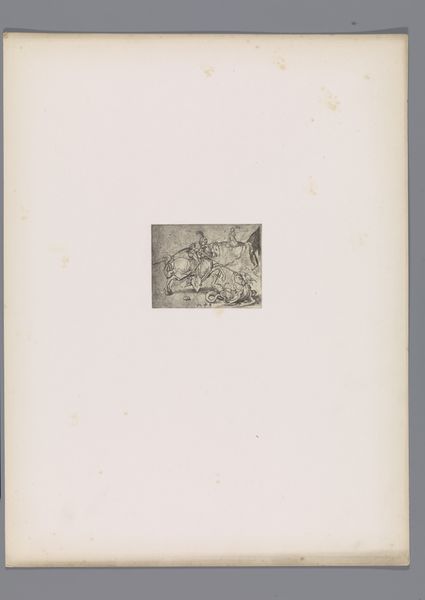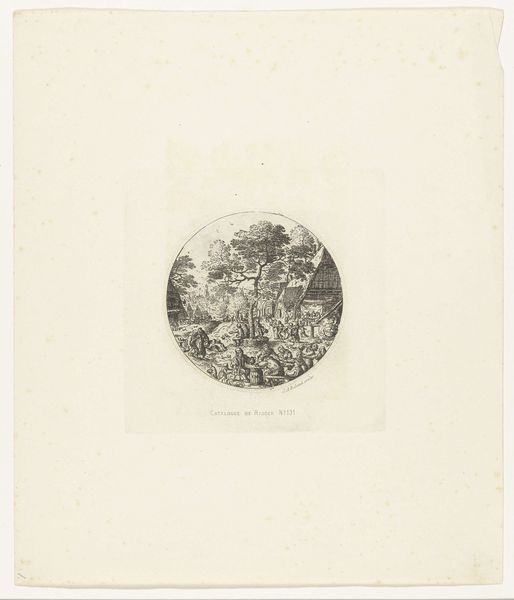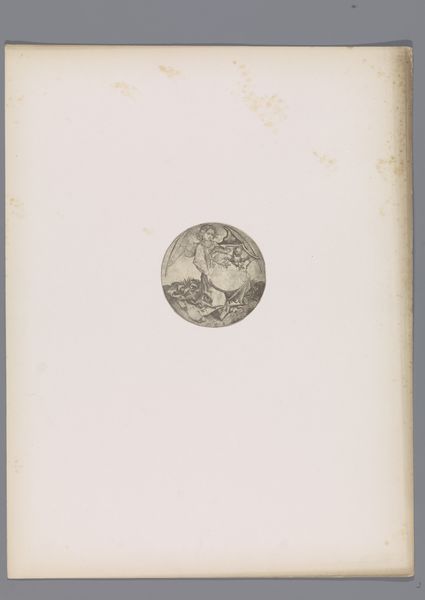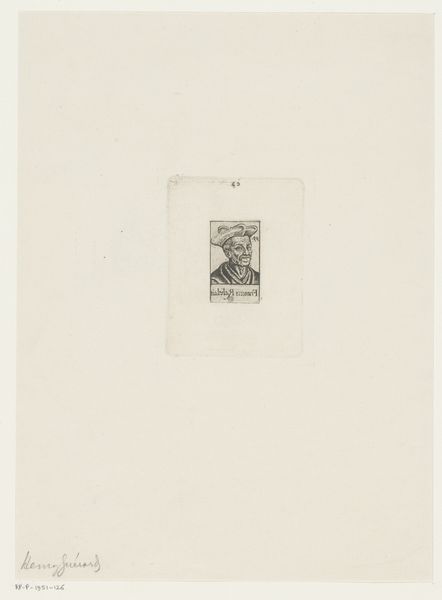
Dimensions: 63 × 64 mm (image); 80 × 75 mm (plate); 267 × 207 mm (sheet)
Copyright: Public Domain
Editor: This etching and engraving from 1862, by Charles Meryon, is called "Rebus: Here Lies the Ancient Vendetta". It's…intriguing! The central image of the man working within a container, the use of text, and the graphic quality have captured my attention. What do you make of it? Curator: The man looks like he's printing, doesn't he? We must examine the means of production itself: the materials, the engraver’s tools, and the paper Meryon employed. I would wonder what was accessible to him, financially? This wasn't some idle past-time, but most likely the way this Romantic-era artist would produce income through piecework. Note the circular arrangement with what appears to be stylized script-- consider its purpose within the piece. Editor: So, by "means of production" you mean more than just the physical tools? It's about the broader economic system too? Was Meryon perhaps commenting on the nature of work or consumerism through this image? Curator: Exactly! What raw materials were available to Meryon to craft the work, where were the closest paper-mills? By examining the commercial infrastructures, perhaps he is contrasting his production with others. It is not merely aesthetic; the production, labor, and intended market hold critical context. Is he highlighting a cultural anxiety about emerging manufacturing technologies, perhaps questioning artistic value within an industrializing landscape? Editor: That’s a perspective I hadn’t considered. So instead of simply analyzing its aesthetic quality, you're looking at it in terms of how the artwork itself came to be made, sold and then consumed as a cultural object. I wonder if this image was ever really widely disseminated, given its dense symbolism. Curator: Precisely. And to me, Meryon isn't simply 'an artist' removed from the system, but embedded within these layers of materiality. It urges us to contemplate what is 'high art' vs. commodity culture? Editor: Thank you. Now, when I look at Meryon’s work, I will try to understand its role in the historical network.
Comments
No comments
Be the first to comment and join the conversation on the ultimate creative platform.
